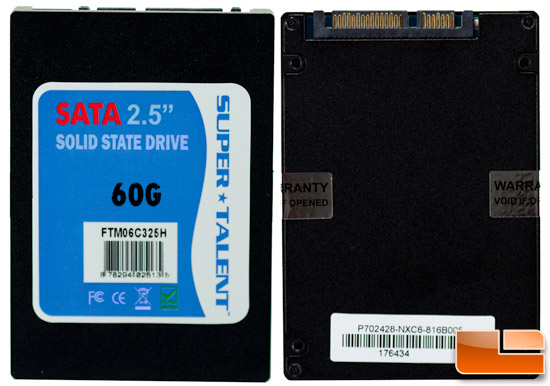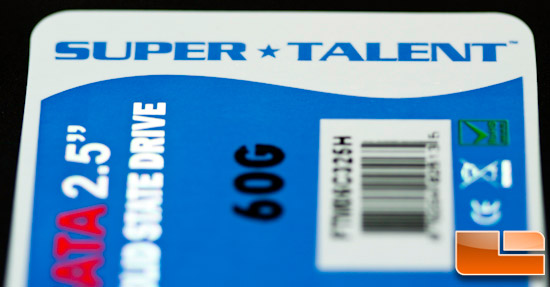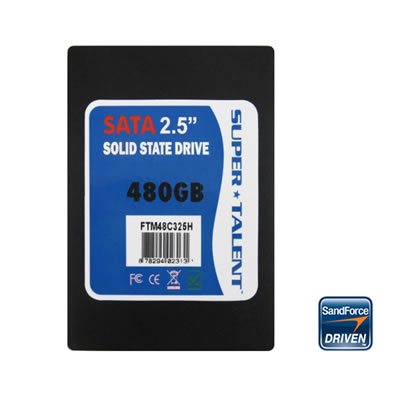Super Talent TeraDrive CT3 64GB SSD Review
Capacity, Final Thoughts & Conclusions
Taking a look at the capacity of the 64 GB Super Talent TeraDrive CT3 we see that in Windows, there is 59.6 GB available to the user as reported by Windows. Super Talent reports that there’s 7% overprovisioning employed by the firmware which is typically what we see with consumer level drives. This overprovisioning provides extra NAND for the firmware to access for addressing wear-leveling activities.

Overall, we saw the results we’d expect to see from a mid-range, small capacity drive. Sequential reads and writes for compressible data were excellent and on par with most larger SandForce SATA III drives. It’s when we encounter the incompressible data that the diminutive CT3 starts to chug a little and performance is off that of the big boys. This is no knock on the CT3, it’s just the performance outcome that we see with all of the small drives. As you approach the 240 GB mark, performance overall improves with 120 GB being the sweet spot in price and performance. Even so, the CT3 64 GB drive is no slouch, especially when comparing to the older SATA II drives. We didn’t encounter any issues using it as the OS drive and no noticeable differences were discerned in every day tasks from that of larger drives; although our real word tests did show a marked difference in file copy times.

At around $130 for the 64 GB drive, the price per usable GB is around $2.18 which is roughly average if not slightly below in price when compared to other drives of the same configuration. That fits in as expected with where the drive falls within the Super Talent SSD product hierarchy. The entire TeraDrive CT3 line carries a two year warranty against defects and the SandForce SF-2281 controller should do an admirable job keeping performance near optimal; however, with a small drive it’s more critical that you keep your eye on how much data you are filling it with. As a rule of thumb, it’s a good practice to stay below 80% full as an extra measure of protection against premature wear and performance decline.

As we’ve eluded to numerous times in the article (for those of you who skipped to the end), one of the drawbacks to smaller capacity drives is that they’re
generally slower than their larger capacity counterparts. Even so, performance is
way over what you would see with a spinning platter drive so there’s merit in an upgrade if you haven’t made the leap to SSDs yet. For those hung up on performance numbers, you can RAID a pair of these smaller drives to see a large jump in performance but it doubles the cost, the risk, and you lose out on TRIM so you may be better served just getting a larger drive on the outset. As you can see from the image below, drives are available up to 480 GB so if you can afford it, there should be no complaints about lack of capacity options. Until the next generation of controllers makes its way to the market, you won’t find many drives at this capacity that will perform better.

Legit Bottom Line: Super Talent has filled a gap in their product lineup with the TeraDrive CT3 which has turned out to be a solid offering for those with a SATA III capable PC looking to upgrade.

Comments are closed.